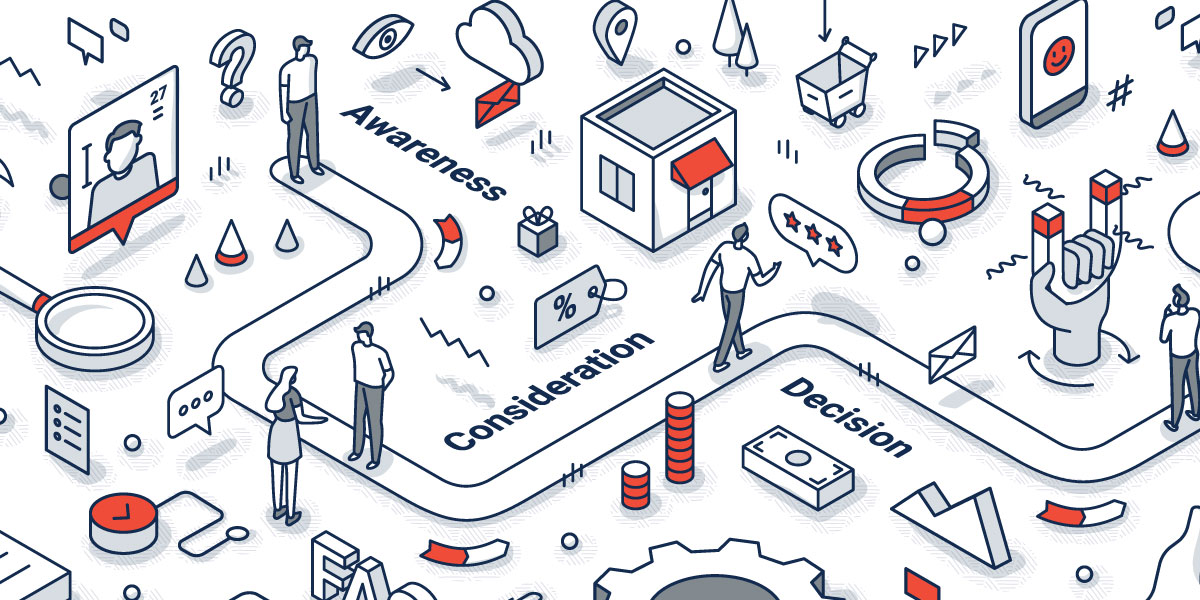Marketers who want to connect with prospective clients in a meaningful way must first take the time to understand what the prospects are going through. With this understanding, inbound marketing and sales pros alike can personalize communications with buyers. Putting marketing and sales communications in the buyer’s context helps to bring value to the interaction and will move them closer to doing business with your organization. Sounds easy, right? It’s a bit trickier than it sounds.
Fortunately, there is a model that helps us better understand the buyer’s experience and their unique point-of-view: the buyer’s journey. The buyer’s journey is the process buyers go through to become aware of, consider, and decide to purchase a new product or service. By using the buyer’s journey, you can create a strong, solid connection between your organization and your prospects, putting you one step ahead in the competition to secure their business.
The Buyer’s Journey Consists of
Three Distinct Phases:
The Awareness Stage
The Consideration Stage
The Decision Stage
Awareness Stage
In my experience, this is the most misunderstood of the buyer’s journey phases. Most people think this is the stage when prospects become aware of your organization. Not quite. The Awareness phase begins when a buyer realizes that an issue exists which will need to be dealt with and overcome. The Awareness stage, which happens at the top of the funnel, is often accompanied by a sinking feeling for the prospect: they just figured out they have a problem, but they may be unsure of how much of a priority fixing this problem should be.
During this phase of the journey, we should be focused on clearly defining our prospect’s goals and challenges. We should also help them understand the consequences of inaction on their part.
Consideration Stage
During the Consideration stage, the buyer outlines their challenge and investigates potential solutions. This is typically a middle-of-the-funnel stage. In this phase, the prospect will evaluate different approaches—not specific solutions—that are commonly used to solve these types of problems. This is an important distinction to make because assuming the prospect has already decided on a category of solution can cause a huge breakdown in communications and impact your interactions in a negative way.
Throughout the Consideration phase it’s important that marketing and sales pros help buyers understand the pros and cons of each solution category. Focus on educating them, rather than delivering sales pitches. Deliver information that will be considered valuable and useful. Earn their trust.
Decision Stage
In the Decision stage, the buyer whittles solution options down to a finite list and selects the perceived best-fit option. This is strictly bottom-of-the-funnel stuff. They’re going to choose a solution, but will it be your solution? It depends. Average marketing and sales teams think this is the moment to hard close, but there is still a bit more work to be done beforehand.
Help the buyer understand what it’s going to be like to have you as a partner. Make absolutely sure you have all of the decision-makers in on the conversation. Dig deep and understand the expectations they have for the solution and provider. Don’t be satisfied with knowing what they like about your product or service. Find out what concerns them most about your offering. If you can allay those concerns, you will earn their business and the opportunity to delight them as a customer.
![20250616_SPW_SEOSmallBizGuideCTA • Sharp Wilkinson Boost Your Online Visibility! Unlock the secrets to a top-ranking website with our FREE SEO Guide for Small Businesses. [Download Your Guide Now!]](https://sharpwilkinson.com/wp-content/uploads/2025/06/20250616_SPW_SEOSmallBizGuideCTA-1024x512.png)






